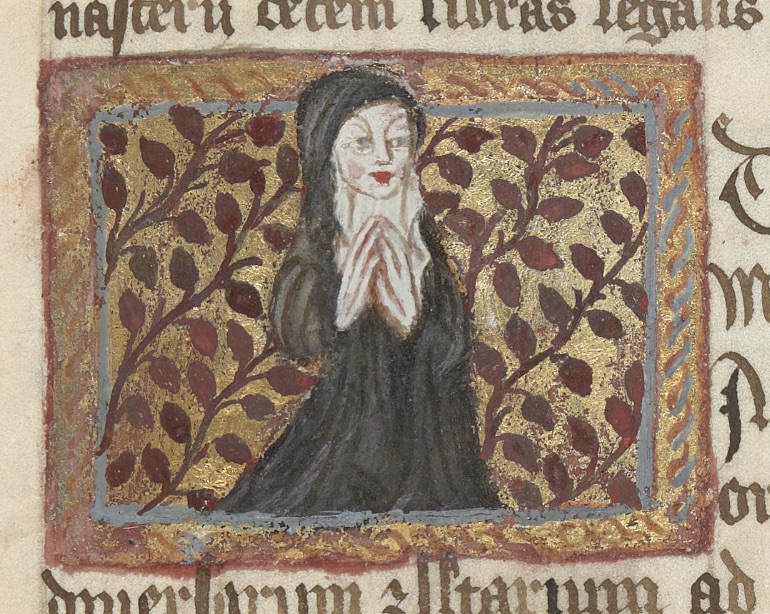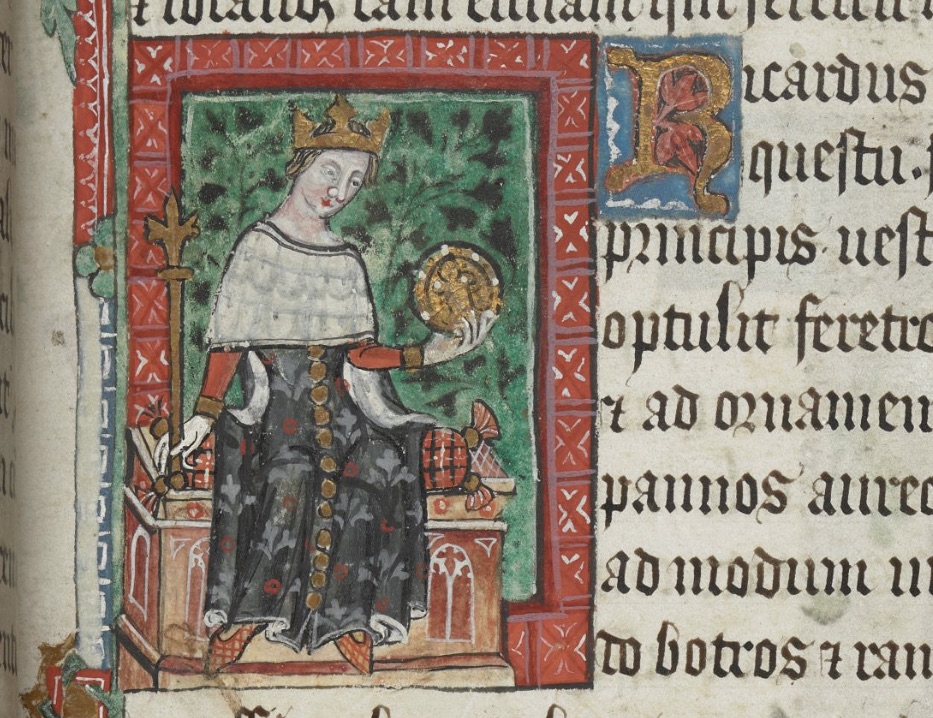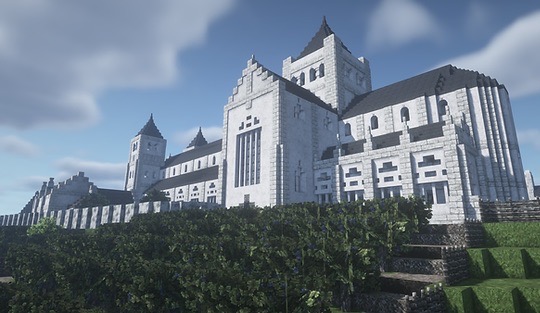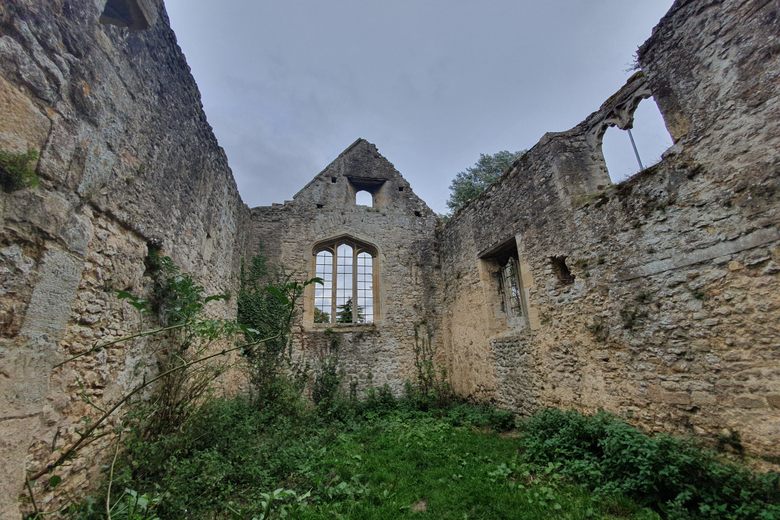
Posted by James Gordon Clark
6 May 2023In medieval England Queen Consorts were not the only women whose status and style of life were changed forever at the coronation of a king. Crowning conferred on the monarch many prerogative rights; Richard II (1377-1399) – after defeating the challenge of the Lords Appellant in 1387 – saw them codified in law. The focus of attention for King Richard, and for most of his successors, concerned the right to act at will, independent of the counsel of his peers and parliament, commanding the fiscal and financial resources of the kingdom.


But there were also less momentous prerogative rights deep-rooted in the historical tradition of the crown which were far less contentious but just as frequently claimed. In taking up their throne, the monarch could enact the jurisdiction invested perpetually in the crown over institutions of original royal foundation. For the kingdom’s ancient abbeys, the new monarch asserted their inherited authority by presenting a candidate of their choosing for solemn profession in the community.
For more than two centuries, from the reign of Edward II (1307-27) to the reign of Henry VII (1485-1509), the monarch chose coronation candidates for entry to the centuries-old abbeys of women associated with a royal founder such as Amesbury, Barking, Godstow, Romsey, Shaftesbury and Wilton. In principle, the same prerogative right pertained to the bishops of England and Wales when they came into office and were consecrated but they did not take it up routinely.
The monarchs’ nominations were made throughout the year of their coronation; sometimes they were made also in the wake of the coronation of the Queen Consort. They are most commonly recorded in the rolls of Letters Patent although some were issued rather as writs and the written records of them are more patchily preserved.
When Richard III nominated Elizabeth Bryther to Shaftesbury Abbey in 1483 she was named as ‘King’s mynchyn [i.e. religious woman or nun]’. Perhaps they were always spoken of in this way.
Not every monarch between 1307 and 1509 selected women to be sent into the cloister as stepped up to their but the names and destinations of candidates are known for Edward II, Richard II, Henry V, Henry VI, Richard III and Henry VII.
The coming of the Tudor dynasty marked a new departure in the ceremonial of coronation, as a new device, or order of service was drafted. Yet Henry VII, whose personal religion had strong monastic flavour, held on to the old tradition of nun nominations. Even in the last months of his life, when he contemplated a second marriage to Margaret of Austria, duchess of Savoy, he nominated Amicia Preston to Wilton in anticipation of a coronation that never occurred.
The abbeys they chose were all within the Benedictine tradition, although Amesbury followed the reformed customs of Fontevraud. All were of royal foundation, had attracted ongoing royal patronage and seen entrants of noble, even royal blood. The coronation candidates were sent into communities whose culture and society were well-suited to monarchy.


Always, it would appear, the women were members of families tied to the incoming monarch’s household either by birth or service. Margaret Swynford, nominated for Barking Abbey by Richard II in 1377, was daughter of Lady Katherine Swynford whose husband, Sir Hugh was knight of the royal household. In fact, her father may have been Lady Katherine’s lover, the king’s uncle, John of Gaunt. Margaret was nominated alongside her cousin, Eleanor Chaucer, daughter of Geoffrey, the poet and at this stage of his career, a yeoman member of the royal household. Margaret Camoys, nominated for Wilton Abbey at the same time was daughter of Sir Hugh de Camoys, a household knight. Elizabeth Russell, nominated for Godstow Abbey, stood several paces further out from the Ricardian court circle: her father, Robert was in the service of Thomas Beauchamp, earl of Warwick, and probably he was brother of Sir John Russell, knighted as Richard came to the throne, and already among the courtiers in favour.
Goda Hampton, nominated for Barking Abbey by Henry VI in 1430 was daughter of John, who was only beginning his career in the service of the crown as an esquire of the royal household. The different standing of the family, and father in each instance suggests there was wide awareness of this source of court patronage, and only a narrow chance of success.
As suggested by these different degrees of proximity to the monarch, these nominations of nuns were made as a means of exercising patronage, purchasing, or rewarding service. The need to build a network of loyal servants of the crown was especially pronounced at moment of minority succession such as that of Richard II, when the crown was conferred on a child. It is hardly surprising that the largest number of nominations to nunneries recorded are from the coronations of the nine year-old Richard II (1377) and the eight year-old Henry VI (1429-30).
The destinations of the women were not arbitrary decisions. Margaret Camoys was presented to monastery where her aunt, Isabel, presided as abbess (1352-96). Elizabeth Russell went to Godstow, within range of the Russell’s home territory in Warwickshire. Little is known of the subsequent lives of these women, although there is some indication that they remained in the religious life notwithstanding the fact that its beginning was out of their hands. Margaret Swynford and Eleanor Chaucer ended their lives at Barking. Perhaps the succession of other women did too, binding the observant life of Benedictine women to crown, court and coronation almost to the brink of Reformation.